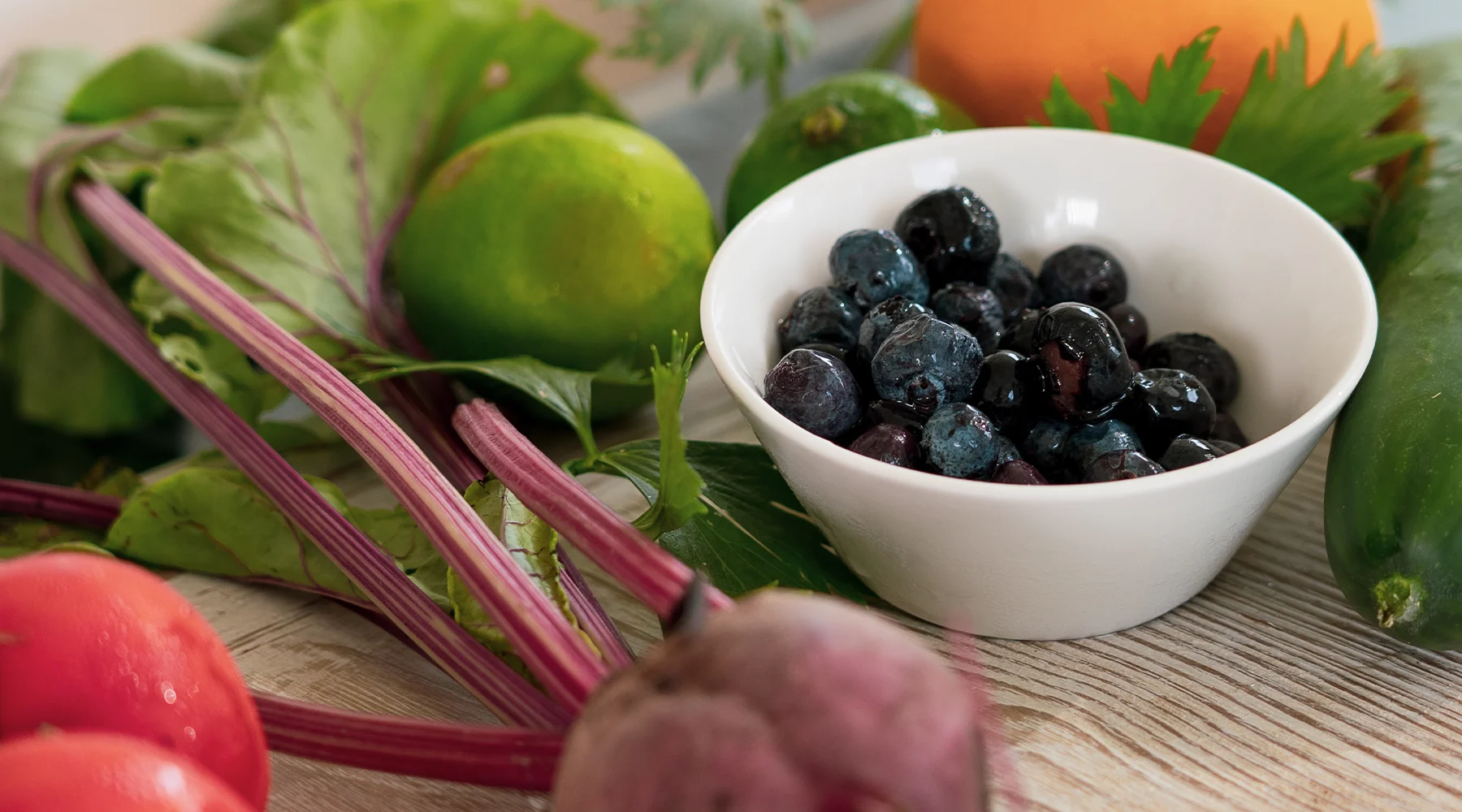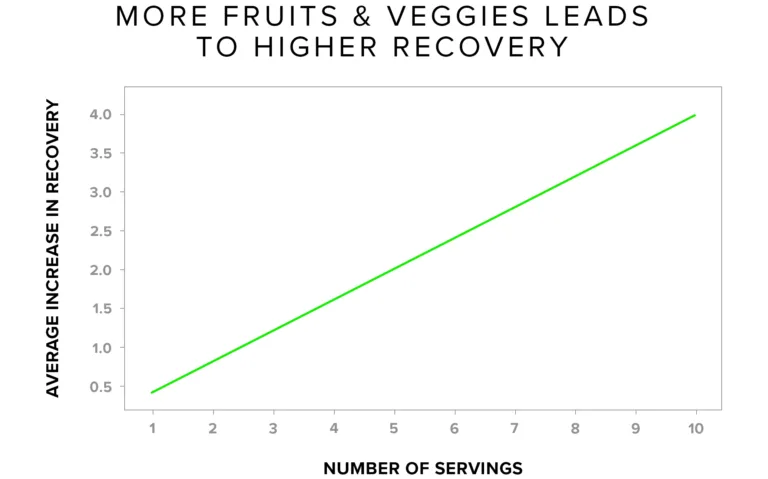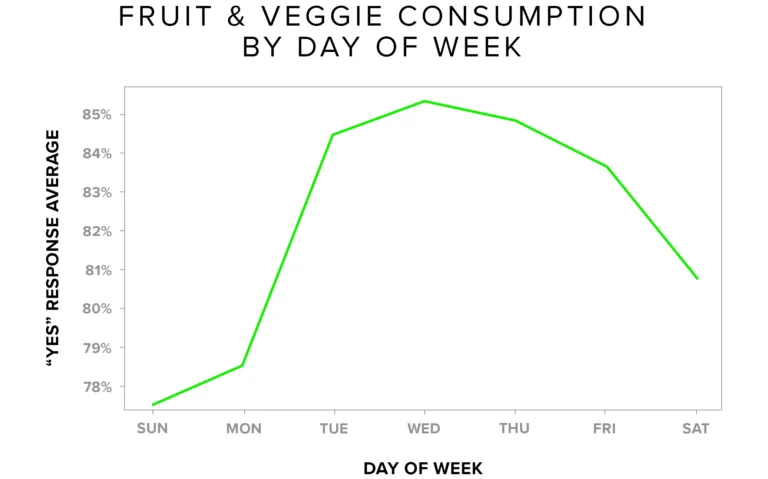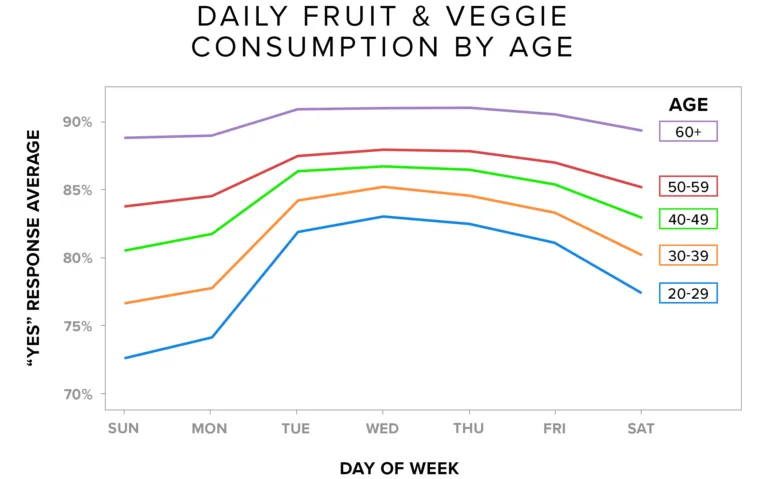Topics
- Article
- Behavior Impact
- Health & Wellness
- Nutrition
Positive Impact of Eating Fruits and Vegetables on Strain, Recovery & Resting Heart Rate

We explore how fruit and vegetable consumption can improve WHOOP members' physiological data, and discuss patterns in healthy eating habits.
Many of the most popular new year's resolutions we make involve nutrition and finding ways to eat healthier. With so many people adjusting their diets in the new year, we examine how consuming fruits and vegetables affects WHOOP members’ recovery and strain metrics, as well as patterns we see in the data. We studied the data of over 30,000 of our members who regularly record consumption of fruits and vegetables in the WHOOP Journal. The basic idea was to compare their typical strain and recovery between days that they did and did not consume fruits and vegetables. More specifically, we also examined trends in when fruits and vegetables were consumed, as well as corresponding differences in recovery, resting heart rate, and strain. In total, we looked at approximately 3.5 million journal entries spanning the course of about a year.
BENEFITS OF FRUITS & VEGETABLES TO STRAIN, RECOVERY, RESTING HEART RATE
We know that fruits and vegetables provide a variety of vitamins and nutrients, and can even reduce the risk of heart disease and stroke, but how does consumption impact our members’ strain and recovery? We examined WHOOP members' strain on the day they report consumption and their recovery and resting heart rate (RHR) on the following day. On average, WHOOP members record a 4% higher strain on days that they consume fruits and vegetables–the takeaway being they likely exercise more or push themselves a little harder on days they follow cleaner eating habits. Additionally, they also wake up the next day with average recoveries 3% higher and resting heart rates 1 beat per minute lower.

Eating fruits and vegetables improves WHOOP members' average resting heart rate and next-day recovery.
Recovery INCREASES with MORE Fruits & Vegetables
Within the journal feature, members can also record how many servings of fruits and vegetables they consumed in a day. When they do that, the average daily amount is 3 servings. We analyzed the relationship between number of servings and recovery, and found that for each serving members reported consuming there is a related average increase in recovery by about half a percentage point.

More servings of fruits and vegetables leads to greater increases in average recovery.
The same trend also extended to resting heart rate, with the average member decreasing almost a half a beat per minute for each serving of fruits and vegetables consumed. We found that these results were consistent for both men and women across strain and resting heart rate. For recovery, we saw a slightly greater average increase for men (3.2%) than for women (2.5%)
HEALTHY EATING TRENDS BY AGE, TIME OF YEAR & DAY OF WEEK
In the fall and winter months around the holiday season we saw fewer instances of fruit and vegetable consumption, even though the number of total members tracking stayed mostly consistent. However in the new year, there was a 3% increase in “yes” responses to consumed fruits and vegetables, potentially due to a new year's change in diets.

Fruit and vegetable consumption decreased heading into the holiday season, then rose again in January.
Breaking it down by day of the week also gives us some noteworthy insights into WHOOP members’ eating habits. Although consumption is strong mid-week, members aren’t eating as many fruits and vegetables over the weekend. We know that average recovery tends to dip on the weekends as well, so paying more attention to fruit and vegetable intake on those days could help.

Fruit and vegetable consumption is highest mid-week and decreases on the weekends.
As we split our analysis out into age groups, a clear trend emerges in the data–as age increases, the relationship between weekends and lower consumption flattens out. This indicates that older members are more consistent with their daily fruit and vegetable intake, while younger members often neglect fruits and vegetables on the weekends. We also found that overall, as members get older they are more likely to consume fruits and veggies each day.

As WHOOP members get older they become more consistent with their fruit and vegetable intake.
TRACK YOUR CHOICES & BEHAVIORS VIA THE WHOOP JOURNAL
This analysis suggests a strong positive population-level relationship between fruits and vegetable consumption and next-day recovery. Introducing, or increasing, fruits and vegetables to a diet may be that extra step that helps get you in the green! Using the WHOOP Journal, you can track consumption, as well as other aspects of diet and lifestyle to see how they impact your data. For example, does wearing an eye mask improve your sleep and recovery? Or how about taking melatonin or magnesium before bed? When you log these and other behaviors in the journal, WHOOP can provide you with actionable insights as to how they affect your various metrics. RELATED: How Eating Before Bed Affects Your Sleep and Recovery